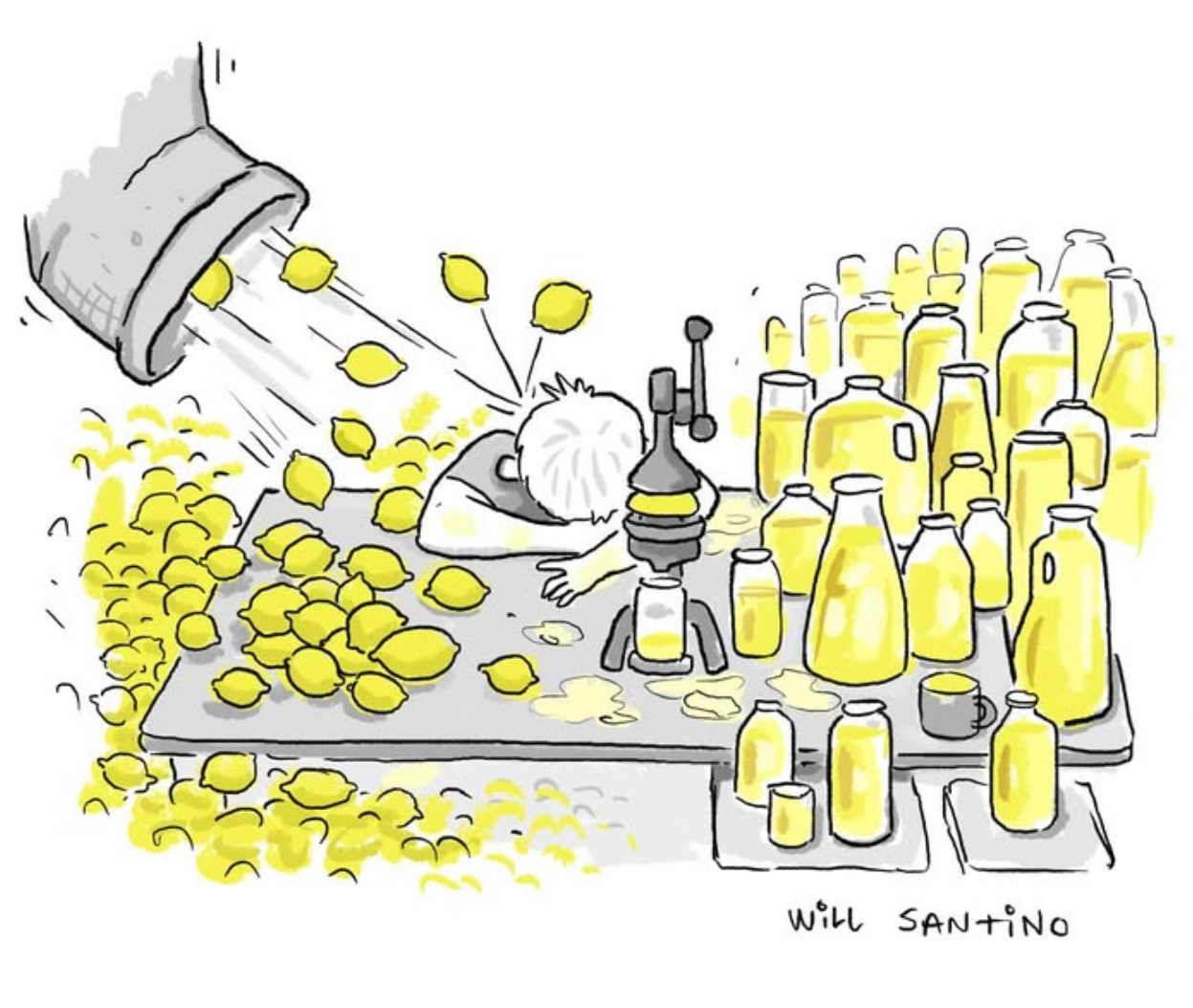When I came across the cartoon above, it triggered a bit of PTSD from the many times we have been forced to face adversity and make the best of it. I am sure most everyone can relate. How many times have you been told to “make lemonade!?”
Somewhere, at some time you have also probably been asked if you believe that your “glass is half empty or half full?” The question is intended to determine whether you are an optimist or pessimist in how you view problems and therefore, your approach to problem solving.
Does being an introvert or extrovert foretell your success in determining the true nature of the situation and the best path to its solution? The very question supposes that your internal wiring makes a difference in outcomes.
Pollyannas may be content to make a sugary concoction when the situation is sour. For the rest of us, we need a less saccharine strategy for coping and moving forward.
Following is a reprise of a post originally written in March, 2022. I think it fits the moment many of are now in: trying to “make lemonade” out of a cascade of lemons being fired at us, and determining how best to evaluate the issue(s) and potential solutions rationally and realistically.
So…Cheers…and drink responsibly!
* * * * * *
When I’ve worked with organizations on planning, we usually start with a SWOT analysis, compiling a list of strengths, weaknesses, opportunities and threats. Managers like to focus on the positives, of course. The assets - strengths and growth opportunities - tend to far outweigh the liabilities - weaknesses and threats - that they acknowledge.
Positivity is part of the executive/entrepreneurial DNA. Even if it’s not ingrained, it is certainly expected, and in some cases even demanded. Few are hired or compensated for managing the status quo after all. Corporate caretaker isn’t a professional title I’ve seen on a resume.
But relentless optimism isn’t a viable strategy and it certainly isn’t a sustainable operating plan. When troubles come, they usually emerge from the blind side. And because they are unexpected, the organizations operating without a playbook often exacerbate their problems by doing more of the same thing that led to the trouble. They do not follow the first law of holes, which is: “When you find yourself in a hole, quit digging.”
Because of this, many times a drama becomes a crisis, damaging the organization more than the unexpected event would have alone.
Successful planning doesn’t sugercoat or explain away the unpleasant. It is grounded in a rational and realistic assessment of past, current and future states. Realism is the key. Often that point of view cannot be brought forward from within the organization; it must be brought in, in the form of an outside facilitator. A good facilitator can provide an excellent return on investment.
Which brings us to the Stockdale Paradox and its application in organizational planning. Admiral William Stockdale survived eight years of imprisonment in the infamous Hanoi Hilton during the Vietnam War. His story, and the origins and applications of the Stockdale Paradox, were told in the business bestseller Good to Great by Jim Collins. A synopsis can be found here and is illustrated below.
This may seem to some an over-the-top take on planning. Most organizations aren’t facing life and death situations after all. Or are they? Given the rate of failure among start up and young business, the difficulties in managing leadership transitions among more mature organizations, and the continual disruption caused by accelerating technological and social changes, I would argue it’s not.
A failure to plan is planning to fail, the adage goes. Or as Ringo sang:
“Got to pay your dues if you wanna sing the blues,
And you know it don't come easy.” - Richard Starkey






Yes, many thanks! I am reading it now and it’s already a great article with info I can use.
Thank you for this, Al.